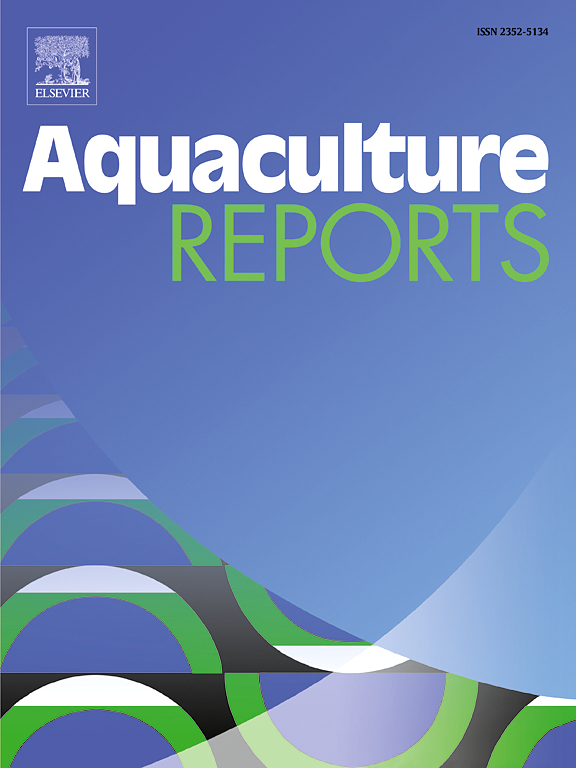Effects of berberine combined with Pennisetum sinese Roxb meal on growth, hepatic lipid metabolism, and intestinal health of grass carp, Ctenopharyngodon idella
IF 3.2
2区 农林科学
Q1 FISHERIES
引用次数: 0
Abstract
Intestinal inflammation and hepatic fat accumulation syndrome is a major issue in farmed fish. In this study, grass carp (20.3 ± 0.1 g) were fed for 8 weeks with six feeds containing different Pennisetum sinese Roxb meal (PSRM) levels (0, 5, 10 %) and 0 or 0.1 % berberine (BBR). Growth remained unaffected by BBR and PSRM. PSRM reduced the CF, HI, and VSI, whereas BBR had no such effect or interaction. PSRM (not BBR) suppressed the activities of serum AST and ALT, as well as the contents of LDL - c, T - CHO, and TG (P < 0.05). However, BBR only interacted with the effects of PSRM on the AST and ALT activities (P < 0.01). BBR and PSRM decreased hepatic lipid droplet deposition and TG/T - CHO contents (P < 0.01), without interaction. Transcriptionally, both BBR and PSRM suppressed the lipogenic genes PPARγ, ACC, and SCD (P < 0.01) and upregulated the lipolytic genes PPARα, ATGL, and APOE (P < 0.01), mostly without interaction. Intestinal immunohistochemistry revealed TNF - α below intestinal villi and IL - 6 on the upper side of villi and in lamina propria, both reduced in fish fed PSRM - and BBR - supplemented diets (P < 0.05). BBR and PSRM suppressed pro - inflammatory (TNF - α, IL - 6, IL - 8) and ER stress genes (GPR78, ATF6, IRE - 1α, PERK), and promoted anti - inflammatory (TGF - β1, IL - 4/13 A), with interaction on TNF - α, IL - 8, GRP78, PERK, TGF - β1 (P < 0.05). BBR and PSRM triggered the FXR signaling pathway in liver and intestine, with BBR interacting with PSRM on most genes. Overall, BBR didn't disrupt PSRM-induced benefits on body morphology, had no superimposed effect on intestinal health but a synergistic effect on fat reduction.
求助全文
约1分钟内获得全文
求助全文
来源期刊

Aquaculture Reports
Agricultural and Biological Sciences-Animal Science and Zoology
CiteScore
5.90
自引率
8.10%
发文量
469
审稿时长
77 days
期刊介绍:
Aquaculture Reports will publish original research papers and reviews documenting outstanding science with a regional context and focus, answering the need for high quality information on novel species, systems and regions in emerging areas of aquaculture research and development, such as integrated multi-trophic aquaculture, urban aquaculture, ornamental, unfed aquaculture, offshore aquaculture and others. Papers having industry research as priority and encompassing product development research or current industry practice are encouraged.
 求助内容:
求助内容: 应助结果提醒方式:
应助结果提醒方式:


